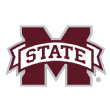For the second year in a row, I'm going to play NFL general manager. It worked out pretty well a year ago, with one notable exception.
My task is to pick three players who may outperform where they're picked in the NFL draft later this week and three players who may underperform where they're drafted.
I hit on all three of the sleepers last year -- Penn State safety Adrian Amos, Clemson defensive tackle Grady Jarrett and Kansas State receiver Tyler Lockett. None of the three was drafted higher than the third round, but they all had anywhere from strong to spectacular debut seasons in the NFL. Lockett made the Pro Bowl as a return specialist and set a Seattle Seahawks rookie record with 1,915 all-purpose yards. Amos made the 2015 All-Rookie Team as selected by the Pro Football Writers Association.
As for the three players I picked to underperform, lumping former Georgia running back Todd Gurley in that group doesn't look too smart right now. All he did last season was rush for 1,106 yards and earn NFL Offensive Rookie of the Year honors. What knee problems, right?
The other two on that list -- LSU cornerback Jalen Collins and Miami receiver Phillip Dorsett -- struggled for much of last season as rookies despite being taken among the top 42 picks in the draft. In fairness, they've played only one season as pros.
So here we are again, and I've talked to several NFL scouts and college coaches and used my own eye test (as untrained as that may be) and come up with three players in the 2016 draft who might outperform where they're drafted and three more who might underperform where they're drafted.
Potential draft sleepers
 C.J. Prosise, RB, Notre Dame
C.J. Prosise, RB, Notre Dame
Running backs tend to slip in the draft anyway, and because Prosise played only one season at the position, some NFL teams will feel as if he doesn't have a big enough body of work to draft him, at least not very highly. But there's also another side to that. The 6-foot, 220-pound Prosise doesn't have the mileage on his body that most of the top-rated running backs do. Plus, he's one of the best pass-catching backs in this draft after playing much of his career at Notre Dame as a receiver. More than ever in the NFL, running backs have to be more than just the featured runner, and Prosise could be one of those guys who rushes for 700 yards and catches 40 passes in a season. He's well-built and big enough to run between the tackles, and he's also adept at making the first man miss. Last season, Prosise rushed for 1,032 yards and also caught 26 passes. Nearly 50 percent of his rushing yardage came on runs of 15 yards or longer. Prosise was also a special teams ace for the Irish as a sophomore. If he lasts until the third round or even late in the second round, some NFL team is going to get a real bargain, not to mention one well-rounded football player.
 Joe Schobert, LB, Wisconsin
Joe Schobert, LB, Wisconsin
Somebody's going to get a steal in the middle rounds with Schobert, a former walk-on at Wisconsin who morphed into one of the most productive defenders in the Big Ten over the past two seasons. You know the story. He doesn't have ideal size (or length), nor does he have elite speed. What he does have is a long history of making plays, and he has the tape to prove it. The 6-foot-1, 247-pound Schobert tied for 11th among FBS players last season with 19.5 tackles for loss, including 9.5 sacks, and also had six forced fumbles and 12 pass breakups from his outside linebacker position. He's quicker than he is fast and super instinctive, which is why he's always around the ball. He doesn't take false steps and is a sure tackler. He could get a look at inside linebacker in the pros. Wherever he lands, Schobert will be productive and one of those players everybody will wonder three or four years from now why he didn't go higher in the draft.
 Sterling Shepard, WR, Oklahoma
Sterling Shepard, WR, Oklahoma
Shepard is this year's version of Lockett, who went in the third round last season and made a huge splash for the Seahawks both on offense and special teams. Shepard isn't ranked among the top-five receivers by most analysts, and this could be a year when there aren't many receivers taken in the first round. But when you watch Shepard play -- his route-running, strength, ability to make big catches in traffic and the way he elevates an entire football team -- there's no question he will have a first-round career. Easily one of the most dependable slot receivers in the draft, Shepard makes up for his lack of size (5-foot-10, 190 pounds) with his ability to get open, in particular his combination of straight-line speed and the quickness to change directions. Oklahoma coach Bob Stoops said recently Shepard would make a terrific pro, and eight to 10 years from now, the only question involving Shepard will be how somebody didn't pluck him in the first round.
Potential draft risks
 Taylor Decker, OT, Ohio State
Taylor Decker, OT, Ohio State
Most projections have the 6-foot-7, 310-pound Decker going among the top 20 picks in the draft. If he does come off the board that early, it's fair to question whether a guy who doesn't seem suited to play left tackle in the NFL warrants such a high pick. Decker can be a beast of a run-blocker and was certainly a big part of the Buckeyes' success the past few years. But two opposing defensive coordinators who faced him said he wasn't a polished pass protector and struggled to block speed guys off the edge. Most scouts simply don't think Decker has the agility and footwork to play left tackle in the NFL, which means he projects as a right tackle, potentially even a guard. That's not to suggest he won't be a solid pro, but it may be a stretch to think he will live up to his first-round billing.
 Josh Doctson, WR, TCU
Josh Doctson, WR, TCU
There's a lot to like about Doctson, who was putting up eye-popping numbers last season before a wrist injury caused him to miss the final three games. When Gary Patterson went to more of a spread offense by bringing in Sonny Cumbie and Doug Meacham prior to the 2014 season, Doctson blossomed with back-to-back 1,000-yard receiving seasons. He was at his best going up and getting the 50-50 balls, but he still has a ways to go as a route runner and proving he can consistently beat press coverage. Most of the mock drafts have the 6-foot-2, 200-pound Doctson going in the first round, and he's certainly athletic enough to develop into that kind of player. But at the NFL level, with receivers having to be so precise in their routes and able to get in and out of their cuts without losing any speed, Doctson might be more of a developmental guy than he is a first-round guy.
 Chris Jones, DT, Mississippi State
Chris Jones, DT, Mississippi State
As much as any player in this draft, Jones might be the most tantalizing. At 6-foot-6 and 310 pounds, he looks the part of the next Reggie White, and occasionally, will show flashes of that potential on the field. He can be dominant and completely wreck an offense. The problem is you only see that side of Jones in stretches. His college tape at Mississippi State is terribly inconsistent. It's telling he didn't become a full-time starter until last season when he finished with 7.5 tackles for loss, including 2.5 sacks. Jones is still young. He played only three years of college football and had his heart set on being an end earlier in his career, which may have stunted his development. Jones has plenty of potential. Yep, there's that word, but he never played up to his potential in college. Will that change in the NFL? Perhaps. But if he goes in the top 30-40 picks, it's a serious roll of the dice for somebody.
